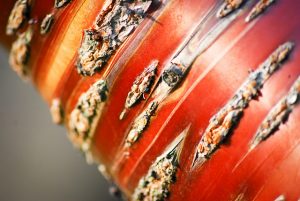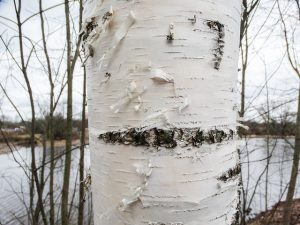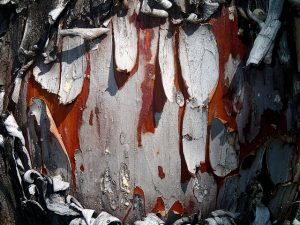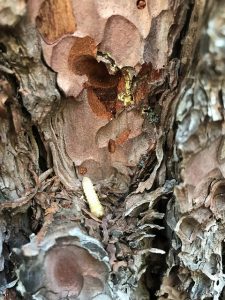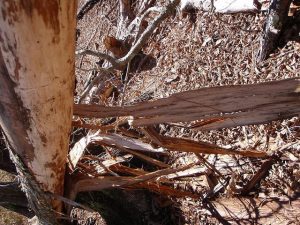Bark acts as a protective coating for your trees, sort of like how our skin acts for humans. When you look at someone’s skin and it looks dry, crackly, and like it is peeling, what do you think? Often, we think that the person is sick or doesn’t feel great – and the same thing can be said about your trees. If your trees have bark that is splitting or falling off, there is certainly something wrong. But what? Knowing how to read your trees can be a bit like learning how to read a foreign language.
It is bittersweet, but the bark falling off your trees can actually help you to identify a problem that may have gone undetected previously. Need some help determining the problem? Here are five possible reasons the bark is falling off of your trees:
5. Environmental Causes
- Frost
- Sun Scalding
- Can affect lifespan of tree
One of the biggest reasons that we see bark peeling from a tree are the effects from the environment. Everything from the extreme cold to the extreme heat can make your trees start to peel. Sun scalding and frost, which often go hand in hand, can make the tree’s burns far more severe.
According to Gardening Know How, “Peeling tree bark is sometimes due to environmental factors. When peeling bark on trees is limited to the south or southwest side of the tree and bare wood is exposed, the problem may be sunscald [sic] or frost damage. This type of shedding affects the health and lifespan of the tree, and wider areas of exposed wood make it more likely that the tree will die.”
A way to prevent the burns and peeling from getting worse is to wrap the trees or, perhaps, painting them. It really depends on the kind of tree and the severity of the burn. Contact a professional to find the best option for your trees.
4. Thin bark
- Not a problem for every tree
- Sometimes happens naturally
- Can be seasonal
If your tree bark starts to peel at a specific time of the year, it may just be that your trees peel because of thin bark. Doing a quick internet search or talking to a tree care professional can help you to determine if this is a normal reaction or if it something that you need to worry about. Peeling thin bark occurs naturally on many trees, including Sycamore trees.
According to NYC Parks, this type of shedding might be something that the trees do because they are preparing for a long photosynthesis, and they need to be able to absorb as much sunlight as possible.
3. Exfoliation
- Happens regularly
- May happen in stages
- Happens with age
Another option is that the tree is simply exfoliating itself – just like we do with our skin. As we age, we need to exfoliate more and as trees age, they need to do the same thing.
Per Home Guides, “A tree grows by forming a new layer of fibrous tissues deep within its core. As it grows from the inside, its outer layers expand, and it sheds its old bark to make way for the new. The bark on a young tree is generally smooth and flexible and can withstand the inner growth without much effect. Old bark, however, is dry and has lost much of its elasticity, causing it to crack and split as the tree grows.”
Of course, this will vary by tree and species – white and paper birch trees are expected to shed their bark whereas other trees won’t do so. Sometimes, the peeling and exfoliation can be made worse by disease, drought, or insect damage.
2. Insects
- Emerald ash borer
- Ants
- Generally starts toward the bottom
If the bark peels more toward the bottom, it could be because of infestations. Boring insects, such as pine beetles or Emerald Ash Borers, feed and make homes and colonies inside of the tree. This eventually disrupts the vascular system and can slowly start killing the tree. You’ll start to see signs of peeling bark around the holes where the insects bore into the tree and eventually it will take over the entire tree.
Common insects can cause the problem too, like bees and ants.
If you believe that this is the case, you absolutely need to do something as soon as possible. Call a tree care professional as soon as you can.
It isn’t unusual for this to happen on trees that were already sick, according to Texas A&M.
1. Tree is Dying
- Extreme cases
- Peeling has lasted a long time
- Limbs are dropping
If the peeling is widespread or happens extremely quickly, it is likely that the worst has happened and your tree has died or is dying, according to the University of Arkansas Division of Agriculture. For many trees, this is the last cry for help and there is still time for you to do something, especially in young trees. However, this is the time to call in a professional who can do quite a bit of work in a short amount of time.
Remember, it is always better to be safe rather than sorry when it comes to the health of your trees. If you see quite a bit of bark peeling or falling off of your trees, it is time to do something.
At Econo Tree Service, our principal concern is keeping your trees as healthy as possible, which means that we do have to do some research as to why your trees are peeling. If you are worried about the health of your trees or fear the worst, it is highly important to give us a call as soon as you can. In many cases, there is no time to waste.
Give us a call today at (650) 200-2495 and our professionals will pay you (and your trees) a visit and help to determine if the peeling bark is a problem we need to solve.


